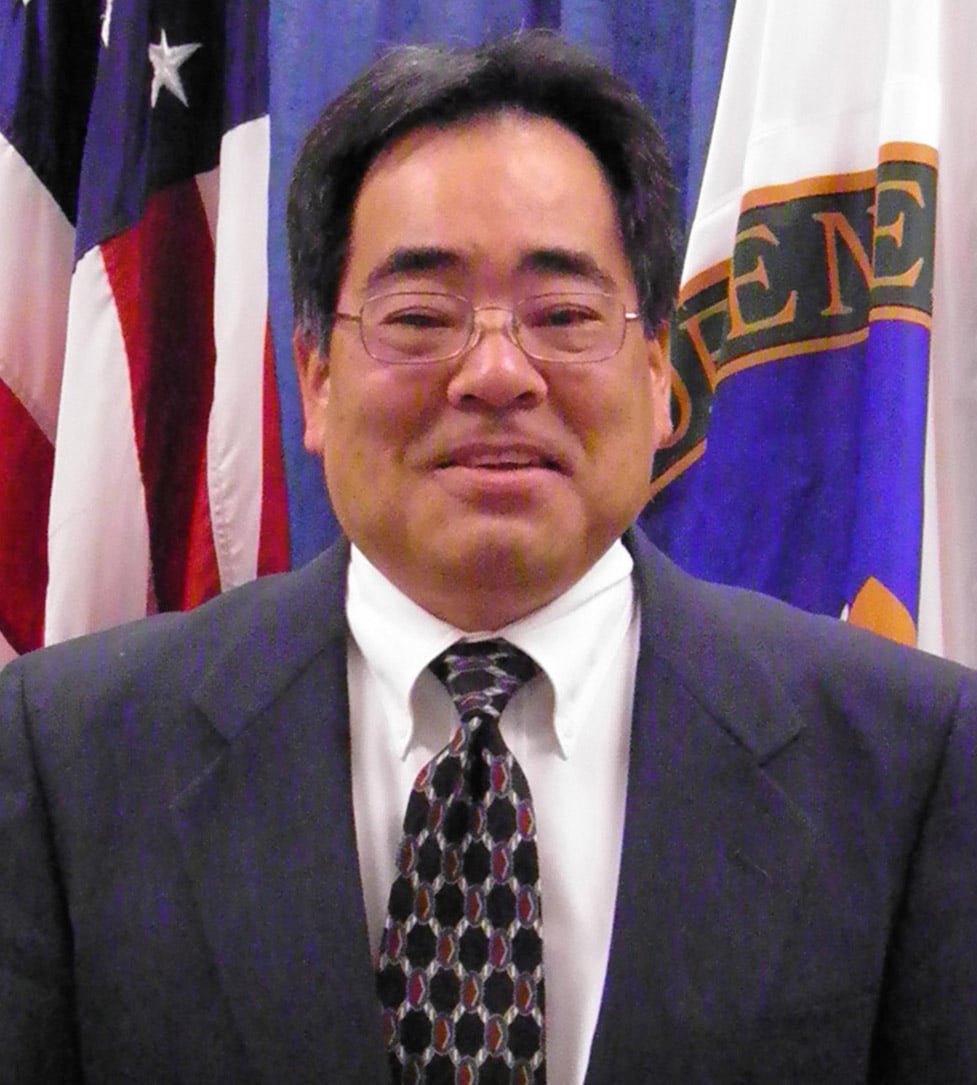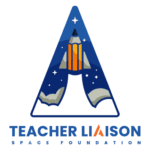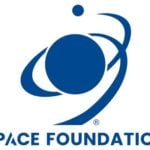Education
Space Foundation Teacher Liaison Selected into NASA/IPAC Teacher Archive Research Program
Written by: developer
 This guest article was authored by Space Foundation Teacher Liaison Kevin Tambara, who was recently selected as a member of the NITARP 2014 class. Tambara is also an Albert Einstein Distinguished Educator Fellow, and exemplifies the caliber of educator selected annually for the Space Foundation's elite Teacher Liaison Program. Educators selected for the 2014 flight of Space Foundation Teacher Liaisons are announced in this issue of Space Watch. Read the article here.
This guest article was authored by Space Foundation Teacher Liaison Kevin Tambara, who was recently selected as a member of the NITARP 2014 class. Tambara is also an Albert Einstein Distinguished Educator Fellow, and exemplifies the caliber of educator selected annually for the Space Foundation's elite Teacher Liaison Program. Educators selected for the 2014 flight of Space Foundation Teacher Liaisons are announced in this issue of Space Watch. Read the article here.
In my experience as a teacher, space exploration has always been one of the most engaging areas of science that naturally leads to student enthusiasm, creativity and curiosity. From the unimaginable distances from Earth to neighboring stars, the mysteries of black holes, to the mystique of ancient mythical explanations for constellations and to the hero status that we rightly place upon our astronauts, it's obvious why we teachers often hear "wow" from our students during space science lessons.
We need to harness this natural curiosity and direct it toward our STEM lessons in general, for it is these students who will carry on our society's technological advances. We need to be teaching more space education throughout all levels of PreK-12 for two primary reasons - the WOW factor, and because our society needs us to.
I am proud to call the remarkable teachers who are Space Foundation Teacher Liaisons my colleagues, and countless more educators who diligently promote space education to their students and communities. Like most of them, my space science knowledge comes from what I learned in school, and from staying current by reading applicable books and journal articles. I also use the projects I worked on as an aerospace engineer to help provide background context for my lessons. However, I have little experience to draw from in the way of authentic astronomy research.
Most students are generally not excited about abstract concepts without application, and we teachers struggle to inject pizzazz into lessons not personally familiar to us. While my academic understanding of astronomy and physics content is solid, I realize I need to personalize my knowledge with experiences that will put that pizzazz into my lessons and ultimately into my students.
All teachers know that better mastery over their subject matter allows them more pedagogical options of delivering that content, resulting in richer experiences for their students. Each year NASA provides teachers an amazing opportunity to perform authentic astronomy research alongside NASA scientists, and to involve their students as well.
The NASA/IPAC Teacher Archive Research Program (NITARP) partners small teams of selected educators with a mentor professional astronomer for a year-long original research project. Each team analyzes astronomical data from NASA's vast archives collected from space- and ground-based telescopes. This data is housed at NASA's Infrared Processing and Analysis Center (IPAC) at the California Institute of Technology in Pasadena, Calif.
The team of teachers, and their students, writes up the results of their research and presents it in a science poster session at the annual conference of the American Astronomical Society (AAS), which is the professional organization for astronomers in the US. Additionally, each team creates a second poster presenting the pedagogical results and educational merits of their experiences in the program. The educators are then asked to leverage this experience by providing professional development for their colleagues in local school districts and communities. The travel expenses required for educator participants and their students to collaborate with scientists at Caltech and present their research results at an AAS conference are paid for by the program.
I am thrilled to have been recently selected as a member of the NITARP 2014 class. I'll be working with Todd Burke, Linda Childs, Caroline Odden and David Strasburger - all dynamic educators from different parts of the US. We'll be mentored by Dr. Varoujan Gorjian, NITARP Deputy Director and an expert astronomer with NASA/JPL.
This year there were nine teachers selected, comprising two research teams. Dr. Luisa Rebull, NITARP Program Director, will be mentoring the other team, consisting of David Black, Jennifer Deeb, John Gibbs and Estefania Larsen. Our NITARP orientation and introductions occurred last month in January as part of the AAS Conference in Washington, D.C., where I met my fellow 2014 class members, the NASA astronomers and previous NITARP participants. Soon after, we immediately plunged into research project discussions.
My learning curve is already incredibly steep (think vertical), and I'm enjoying every moment! We named our team "SIRXS" (SEIP IR Excess Survey), since our project will involve searching for infrared excesses around stars found within the Spitzer Enhanced Imaging Products (SEIP) source list. Even understanding our team name requires a lot of knowledge!
I attended as many of the AAS plenary sessions and presentations as time allowed, immersing myself in the latest astronomy research. During the poster sessions I spoke with many astronomers, trying to understand their research topics a little more with each ensuing conversation. I kept in mind that in one year the roles would be reversed, and that I would be the person explaining our research project and results to an audience.
It's now been a month since the AAS conference, and we have already started our weekly team conference calls. Team logistics, reading for background knowledge, new vocabulary and lots of questions fill our conversations. Our initial goals are to write and submit our research proposal for approval, put into place the tools and procedures to analyze huge amounts of data and prepare ourselves and our students for our working sessions at Caltech this summer. Each week I take some satisfaction in making connections between my academic knowledge and how it's applied in astronomy research. What's even more powerful is that my students will directly benefit from this entire process.
NASA solicits applications to NITARP each year in the fall. I encourage fellow educators to consider joining this warp speed, but incredibly satisfying journey, next year!
About Tambara
Tambara has been a science teacher for the past twelve years in Torrance, Calif, most recently at Bert Lynn Middle School. He has taught a wide range of courses, including middle and high school astronomy, electronics lab, life and physical sciences and calculus-based advanced placement physics. Tambara has served as an Albert Einstein Distinguished Educator Fellow at the National Science Foundation in Washington, D.C. In 2010, he participated in the first Sally Ride Science Academy Program for middle school educators.
Tambara is a recognized STEM innovator in both middle and high school classrooms, having been awarded STEM grants for diverse topics as the science of music, holography, slo-mo science, soft circuits, science of magic and creative computing. He describes his classroom as "part classroom, part workshop and part amusement park." Realizing there was a strong need and keen student interest, he created a CyberMaker Science middle school curriculum, which incorporates a computer programming approach to science and engineering concepts with hands-on design projects.
In recent years, Tambara has assisted research scientists as an Earthwatch Educator Fellow on expeditions near the Arctic Circle to study the effects of climate change, and in Costa Rica to preserve endangered Leatherback Sea Turtles. He has also been a participant in the Space Academy for Educators at the US Rocket Center in Huntsville, and the Maury Oceanography workshop at the US Naval Academy in Annapolis. Tambara earned a Bachelor of Science degree in physics from Harvey Mudd College, and an MBA from Pepperdine University. Prior to teaching, he enjoyed a satisfying career as an aerospace engineer, project manager and technical marketing consultant.
This article is part of Space Watch: February 2014 (Volume: 13, Issue: 2).


